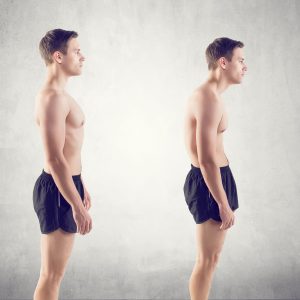Many people associate osteoporosis with an increase in the upper back curve. However when we look at how the bones change shape and adapt to the forces put through them we realise that this may not be the truth.
When people get told they have osteoporosis, one of the things they often do not understand is that this diagnosis is made based on 3 very specific sites that are measured. In fact the readings at these sites can give very different readings, with some areas being lower in density and others being normal. Changes to the health of the bone and its mineral density are often not widespread, but are specific to the sites that do not receive the necessary stress required to adapt and get stronger.
One area that is often low in bone density is the hips. While many people regularly walk to try and improve the bone health and mass in the hip area, it is interesting to know that even a mild heel on a shoe (even some athletic running shoes) can change the pressures around this area. Often instead of the hips bearing a significant amount of load, the knees take up more of this load. Those areas that take up more load are the ones that adapt to the increased strength with more bone being laid down.
This is frequently the case when it comes to posture. When we adapt a posture that brings our head and upper back forward, we load our spine in these areas differently. Different loads reduce the amount of stress that the spine is subject to and hence can result in reductions in bone density. You see our bodies are built to be efficient, and it wouldn’t make sense to carry heavy strong bones in areas of our body that don’t have large amounts of stress. Instead the body makes these areas that aren’t subject to large external loads lighter and reserves the heavy bones for the areas where strength is needed.
How do we make sure that we try and strengthen all areas?
Management of bone health requires a whole body approach that is regularly changed to ensure that all areas of the body are being exposed to continually changing loads. It is also important to think about the areas that may not be getting as much load and try and concentrate on these. For example, if you spend a substantial amount of time sitting, your hips may be at risk of low loads affecting the health of the bones in this area. The common saying “use it or lose it” certainly applies when it comes to bone density and bone health.

